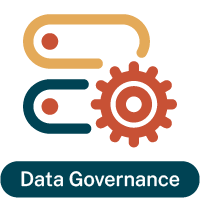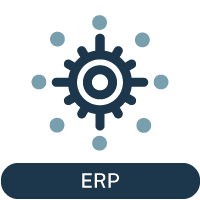I’ve been a data governance practitioner and consultant working with clients for more than 17 years now. I’m growing more concerned about something and wonder if you’re seeing it, too. It’s the lack of goals, measures and incentives for the people responsible for key data governance roles.
Data governance, as a practice, is no longer a new concept. We’ve been at this for some time now — and there are volumes of books, blogs, white papers and conferences on the topic. Data governance should be treated like any other business as usual (BAU) practice, organizational function or process. So, why are we still in a new-concept state?
DG, WE HAVE A PROBLEM
To be fair, this isn’t a problem unique to data governance (DG). I’ve seen it before in large-scale and transformational initiatives where I’ve worked as a practitioner or come in as a consultant to help launch or revive a stalled-out initiative. I see goals aren’t aligned and the programs aren’t supported or understood across the organization.
I’m concerned that so many efforts are struggling or outright failing to move the governance needle forward. One of the main reasons I’ve seen contributing to this, is that early on at the launch of the DG program, no one takes the time to set clear goals, establish measurement criteria and create incentives aligned to the program. It’s assumed the work will simply get done and things will fall into place because everyone will do the right thing. This is wishful thinking, at best.
What happens when goals, measures and incentives aren’t established for governance? There is lack of visibility into the amount of work governance takes, a serious threat from conflicting priorities and a deficit in the organization’s collective inability to dedicate mission-critical time and resources.
“The absence of alignment of goals effectively undermines the team, since there is no collective purpose. Everyone is off doing their own thing, focused and prioritizing their needs over the needs of others on a regular basis.” – The Managers Resource Handbook
WITHOUT GOALS, THE PROJECTS PERISH
I read a Harvard Business Review (HBR) article that nicely sums up my concern: “In business, we have long heard that we are what we measure and we are driven by goals. Human beings adjust behavior based on the metrics they’re held against. Anything you measure will impel a person to optimize his score on that metric. What you measure is what you’ll get. Period. This phenomenon plays out time and again in research studies.”
So if we (and HBR) know this to be true, why is it difficult to discuss goals when a governance program launches? Why aren’t they addressed and acknowledged early on instead of being left as an afterthought — something to get to later? We need to address goal-setting for DG as we would any other matrix organizational structure.
BUT DATA GOVERNANCE GOALS AREN’T ENOUGH
With governance being a particularly broad effort — cutting across functions and teams, as it does — it’s critical that a high level of transparency also exists for its roles and responsibilities. We need to know who is responsible for what, who is accountable for what and so on.
In my experience working with a variety of DG Operating Models, I see the central DG group (i.e., the Data Governance Office or DGO) having clear deliverables and goals. This can often be credited to the the DGO’s direct relationship with the management chain sponsoring or leading the governance program.
At the “local level” (i.e., the business unit), the focus is on finding people to be responsible for DG in a particular subject area or data domain, such as customer or product data. Executives frequently fill roles like Data Owner and Data Steward by nominating high-performers who bring business expertise in the subject or data domain. It comes as no surprise that these people already have a very full plate with their day job and an already existing set of objectives, goals and incentives. If they are now expected to add governance responsibilities, it is a logical to assume that their goals and objectives would be updated to include these deliverables.
More often than not, though, the business units’ goals don’t change. This causes challenges in many ways:
- By not including specific DG goals and deliverables, there’s a perception that the accountability ultimately lies within another group – like the DGO. Unless all roles and responsibilities are clear and backed up by goals and objectives supporting the deliverables, the governance program will languish and stall. This puts pressure back on the DGO to move things forward – because their goals demand it – however, they often lack the authority and/or ability to complete the other areas’ responsibilities.
- To quote some of the “nominated” DG people I’ve worked with: “I have 1,001 things on my plate, and this is 1,002. Nothing has come off my plate.” This should be a concern for everyone: Leadership, the DGO, the business units and the person considered to own the deliverables. (This is the person with extra set of activities he/she doesn’t have time for and likely isn’t being measured against or incentivized for.)
- The business units don’t incorporate DG into their overall deliverables and workload — which causes DG to compete with other, more well-known unit-specific priorities.
WHO’S ON FIRST?
In addition to poorly aligned goals, lack of clarity on who is doing what and by when causes more issues — including:
- The governance program — with its own set of goals and high-priority initiatives — is not visible enough, because it’s not broadly discussed across the business units.
- The central team working to get the program off and running have little or no control over the pieces that need to fit together to make the program move forward.
- The DGO becomes the bad guy who has to keep hounding for status updates, sending reminders and reporting lack of progress back to leadership.
- The DGO takes on the work of the business unit in order to show progress. (Remember, they have goals to achieve and will attempt to achieve those regardless of the barriers.)
- What was initially planned to only take (for example) 90 days, ends up taking a year to accomplish.
WHAT CAN WE DO?
While it may seem daunting, there are ways to tackle the challenges of what’s missing from many programs.
Specifically, we can:
- Encourage leadership to discuss DG’s needs and priorities alongside other programs and projects in the organization. This includes reviewing program deliverables to identify gaps, conflicts, required resources and funding and asking hard questions to gauge the organization’s support of DG:
- Can the organization’s priorities be changed to better support DG?
- What are the risks to the governance initiatives’ timeline, if competing priorities aren’t addressed?
- Are there resource gaps that need to be talked about now vs. later?
- Does the DG Operating Model support how the organization works today — or is it wishful thinking and do we need to change it?
A candid conversation will help ensure the DG program is better understood and set up for long-term success. (The latter is important as it supports the view that governance is a long-term program, not a project that begins and ends.)
- Include KPIs and metrics that measure the DG Operating Model. Identify several clear and succinct ways to gauge your Operating Model’s effectiveness. Consider using a 5-point scale, with 5 = fully functioning, and 1 = not functioning at all.
For example, for Operating Model health you could score the following from 1 to 5:
- Domain engagement and accountability
- DG roles filled and actively engaged
- Business unit goals aligned and assigned
- DG meetings are scheduled and attendance is tracked
- Program decisions are made, tracked and reported
- Artifacts are published and readily available
KPIs and metrics truly matter to your DG program. They support the Operating Model structure and can help when challenges arise (e.g., unmet expectations, funding issues that come up, etc.).
Metrics and program indicators aren’t personal. They take the pressure off the core team, the Data Owner and Data Steward and bring fact-based visibility to challenges. Also, scorecards can add needed peer pressure which may encourage friendly competition among business units.
- Update or create job descriptions to reflect DG roles and responsibilities. This will instantiate governance in a very concrete manner. It also can support new career paths which segue to the alignment of goals and incentives.Make DG program goals and deliverables part of employees’ mid-year and annual performance evaluations with, ideally, the central DG group providing input on business unit reviews.
NOW … OVER TO YOU
Goals. Measures. Incentives. We can agree these are all BAU — right? If we can apply the missing piece — a BAU mindset — to DG programs, we will avoid many of the common pitfalls that distract us from doing the fun and interesting work of governing and improving data for the benefit of the organization.
I wish you the best of luck (make that, dedicated work) in your data governance program.
Do you agree or disagree with my perspectives about the missing piece(s) in governance? I would enjoy hearing from you, so please post a comment below.



